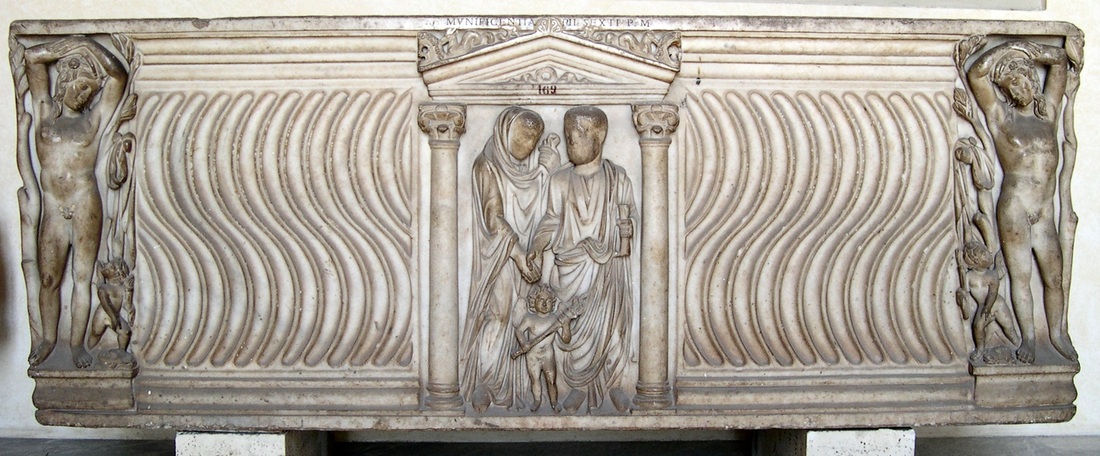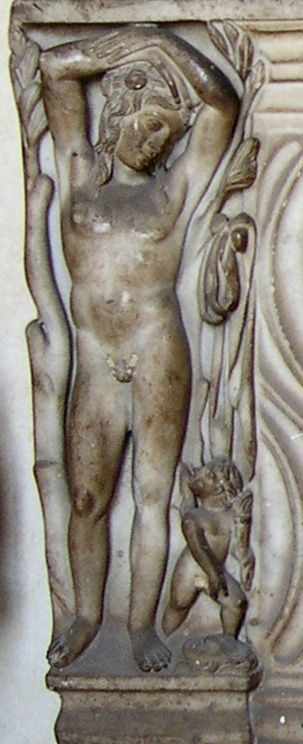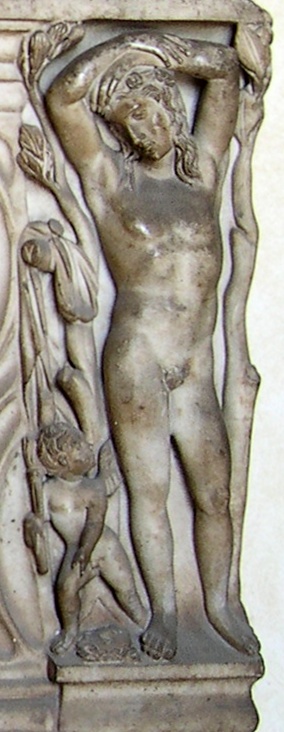|
Who is that boy who stands languidly with arms atop his head, doing his best impression of a male pin-up on both ends of this sarcophagus? And why is there a cupid at his feet, pointing to what looks like a theater mask on the ground? If he weren't doubled up, you might think he was Dionysus, or even Apollo, given the youthful features and the erotic posturing. But since he's duplicated, he probably doesn't represent a deity: Roman carvers often duplicated generic figures, and sometimes even mythological mortals; but they usually refrained from doubling up a god. So who is he? The answer: Narcissus. He's very uncommon: out of roughly 15,000 surviving Roman sarcophagi, only 5 (!) show Narcissus. But this is he. The cupid — that wee godling of desire — who stands at his feet is pointing not to a theater mask, but to Narcissus's own reflection. Which Narcissus, of course, is admiring: the erotic nature of his pose reflects his response to his own image. The composition seems bizarre to us: doesn't the Narcissus of Ovid's story (Metamorphoses 3:402-436) bend over the pool, or rather, lie beside it, rather than stand erect over it? Indeed he does. But the formal parameters of this particular format of sarcophagus, which left a tall but narrow field for mythological depiction at each end, imposed its own restrictions. If Narcissus and his reflection — plus a symbolically helpful (though in Ovid's original narrative, entirely absent) cupid — were all to be shown within this constricted space, our self-asorbed hero would have to stand. Comments warmly invited. (Both the Facebook system below, and the traditional comment form, work dandily.) |
Roman
|




